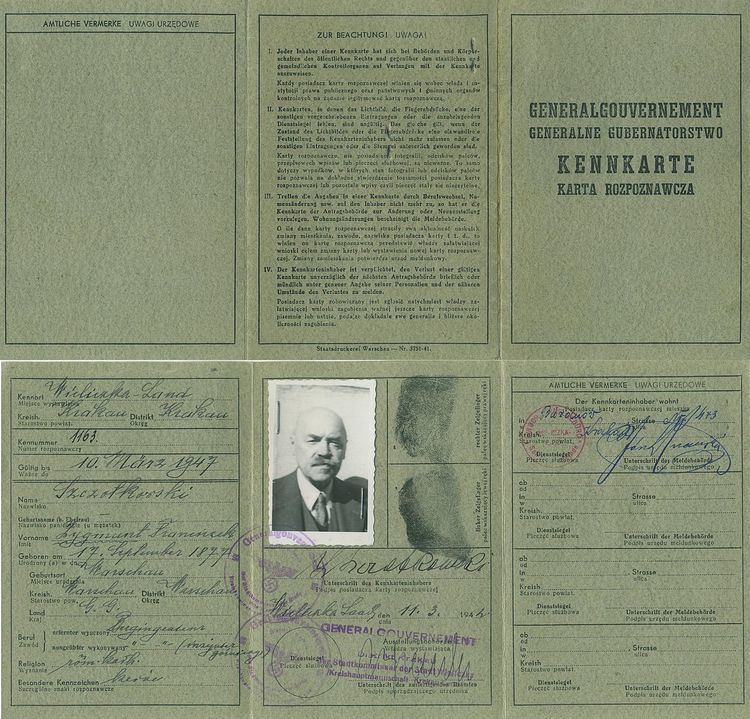 | ||
Kennkarte was the basic identity document in use during the Third Reich era, first introduced in July 1938. They were normally obtained through a police precinct and had the corresponding issuing office and official’s stamps on them. Every German citizen was issued one and was expected to produce it when confronted by officials. After World War II began, Germany began issuing Kennkarten to citizens of conquered countries.
Kennkarten (Polish: Kennkarta) were identity cards also introduced by Nazi Germany in occupied Poland (General Government). They were issued to residents aged fifteen and older, from 1941 to 1943, and were often forged by the Polish resistance.
In the first weeks of German occupation of Poland, pre-war documents issued by the Second Polish Republic were used for identification. On October 26, 1939, following a decree of Hans Frank, Kennkarten were announced. Due to legal arguments, first cards were not issued until June 1941. German authorities continued to issue them until 1943. A Kennkarte was a sheet of thin cardboard, measuring app. 30 by 14 centimeters. It was folded in two spots, making it a three-page book, with each page measuring 10 by 14 centimeters. The color of a Kennkarte was based on ethnicity. Poles had gray ones; Jews and Romas, yellow; Russians, Ukrainians, Belarusians, Georgians and Goralenvolk, blue. Furthermore, letters were introduced to mark each nationality - J for Jews, U for Ukrainians, R for Russians, W for Belarusians, K for Georgians, G for Goralenvolk, Z for Roma (Gypsies).
To receive a Kennkarte, an applicant had to fill out an application, and provide such documents, as birth certificate, pre-war Polish ID, marriage certificate (in specified cases). Polish citizens of appropriate ethnicity (for example ethnic Germans with pre-war Polish citizenship) were obliged to make a formal declaration if they belong to the Aryan race. Upon receiving the card, applicants were fingerprinted. Since Polish-speaking civil servants were involved in the process, the cards were frequently forged, which allowed for members of the Home Army, or Polish Jews, to get a new identity. Furthermore, illegal printing shops manufacturing the Kennkartes operated in occupied Poland. The cards were available on the black market, for the price of 500 zlotys. According to the Gestapo, in 1943 in Warsaw there were up to 150,000 fake cards in circulation. The Home Army estimated that in late 1942, some 10% of residents of the General Government had fake kennkarten.
Other important documents in Nazi–occupied Poland included:
